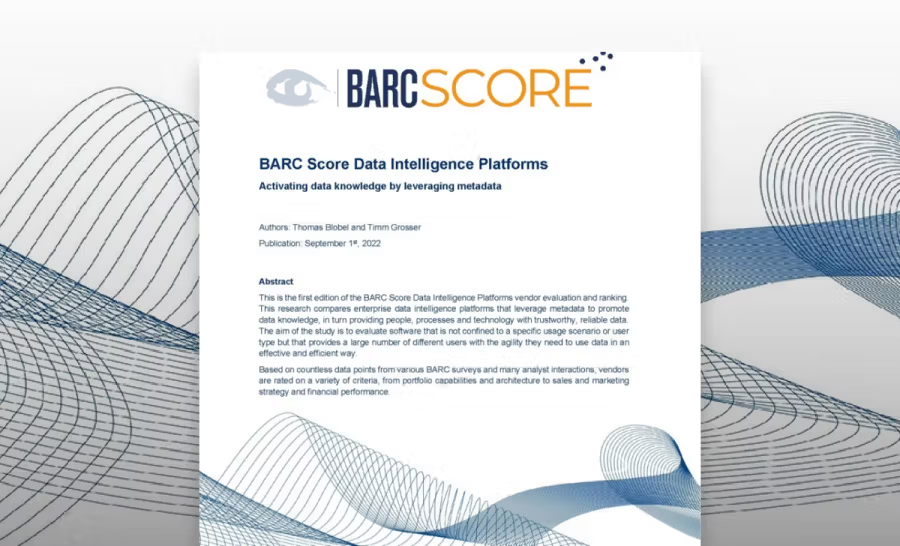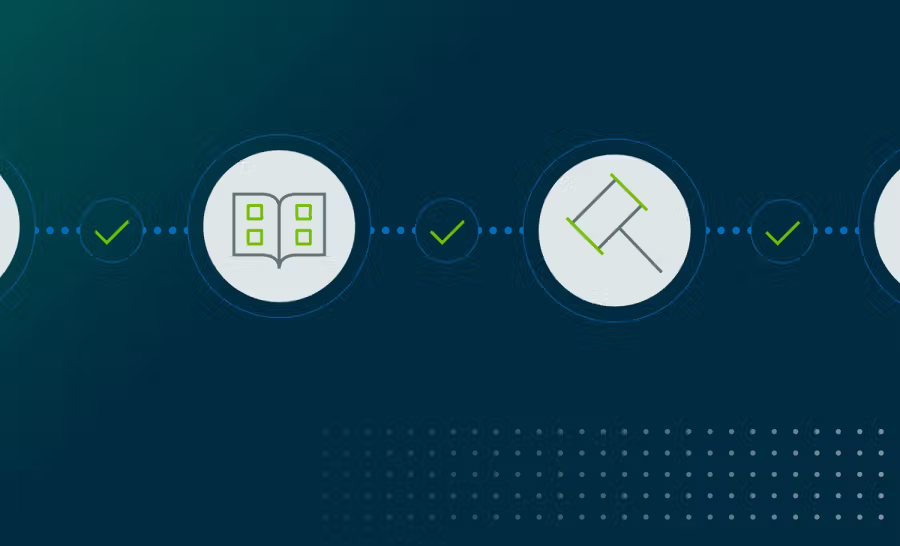Creating a data-enabled organization

Nowadays, digital transformations and using data to make more strategic business decisions is a standard goal for most enterprises.
Ultimately, modern enterprises and organizations seek a comprehensive, innovative approach to data intelligence. While the road to data intelligence is an honorable, worthwhile one, without the right tools and resources, it has the potential to be tedious and treacherous.
The fact of the matter is that data is a powerful part of modern-day business. It’s the center of everything we do. How we manage that data from the start is what presents unique challenges. Becoming a data-enabled organization doesn’t just happen–it takes flexible approaches, elevated communication, the right platforms, and of course, a culture that centers around empowering data citizens.
But, how exactly do enterprises do that?
We’ve detailed the top eight steps we believe are pertinent to every organization’s journey toward data enablement. Our advice? If you’re itching to start your data-enabled adventure, this is the perfect jumping-off point.
What is a data enablement and why does it matter for your enterprise?
Every organization’s idea of data enablement is different. That uniqueness is good (and normal), but it also means that a specific definition of data enablement needs to be created for every individual organization.
Before you begin taking steps toward becoming a data-enabled organization, first you need to try to paint a picture of what that goal looks like.
Ask your data team and data citizens important questions, like:
- What does data enablement look like for our organization?
- How would we define data enablement in a real, actionable way within our enterprise?
Before you can run, you’ll need to walk–and in this case, walking looks like thinking strategically about the outcomes you want to achieve, what our unique data culture might look like, and how you can incorporate those outcomes into your organization’s overall goals.
The top eight steps every enterprise should know when creating a data-enabled organization
Once you’ve determined what your unique definition of data enablement is, you’re ready to tackle your data-enablement journey.
Incorporating these eight steps can help guide you along the way and get you off on the right foot as you embark on developing an innovative and adaptive data-enabled organization.
Step 1: Recognize and understand your starting point
There’s no hard and fast rule for where your data team should sit on your organizational chart. The best practice is usually this: the closer your data team is to the business, the better.
Step 2: Establish a new perspective
Use your data team to help answer bigger questions that span your organization. What business objectives does the organization want to achieve? How can the data team enable these goals? What were previous data enablement efforts like–were they successful?
Step 3: Build “knowledge diversity” into your data team
Set your team up for success by equipping them with “knowledge diverse” members. Teams composed of data-oriented people from across the organization can offer different strengths and perspectives for more holistic business solutions.
Step 4: Focus on your data council
Your data council, like your data team, should also be knowledge diverse. Resist the urge to fill your council with yes men–you’ll want a variety of stakeholders with out-of-the-box opinions to remedy issues and provide oversight of data governance programs.
Step 5: Be flexible
Your organization will need to be ready for change and willing to adapt along with data intelligence. Be flexible when it comes to modifying policies, be nimble around small changes, experiment with software, and more to ensure that you’re adaptive in a digital world.
Step 6: Communicate strategically and constructively
Communication is the most important part of creating a data culture that works. Focus on building strong communication strategies from the start, establishing a clear mission, and providing actionable training opportunities for the rest of the business.
Step 7: Meet the business in the middle
Set up demos for the business, develop jargon less materials that make data easy to understand. Empower data citizens to do things for themselves, and train your team members to use communication experience to maximize the learning process for the rest of the organization.
Step 8: Determine how data can help your organization
Be proactive with how you communicate and interact with the rest of the company. Make your data team an integral part of new projects, embrace all use-cases, and request feedback from the company–then, actually incorporate it.
Your data-enabled journey starts here
Are you ready to take your organization to new, data-fueled heights and make more strategic business decisions? That all goes hand-in-hand with extracting the full value of your data.
With quality, trusted data, a flexible and adaptive approach to data intelligence, and an emphasis on creating a data culture in your organization, you’ll be on the right track toward enabling and empowering your enterprise with data in no time.
The best advice the team at Collibra can offer you is to abide by and learn from these eight principles we’ve shared. The good news? We’ve got an even more in-depth look at these eight steps, why they matter, and how your data team can begin implementing them across your organization.
Download our comprehensive creating a data-enabled organization e-book for an inside look at how to optimize and streamline your organization’s data-enablement journey.
Related articles

Data IntelligenceJanuary 27, 2022
Accelerate IFRS-17 Compliance with Data Intelligence Platform

Data IntelligenceSeptember 27, 2022
Collibra is a Market Leader in first-ever BARC Data Intelligence Platform Vendor Evaluation

Data IntelligenceOctober 28, 2022
The must-have checklist for maximizing the value of your data catalog and governance investments with Collibra

Data IntelligenceMarch 10, 2022
Improve data literacy and data sharing in government
Keep up with the latest from Collibra
I would like to get updates about the latest Collibra content, events and more.
Thanks for signing up
You'll begin receiving educational materials and invitations to network with our community soon.
